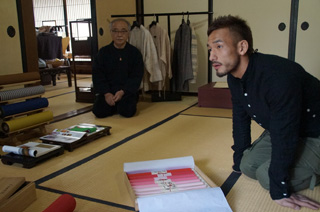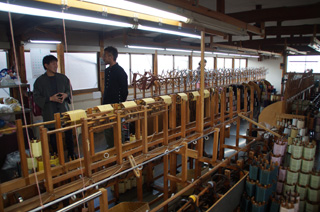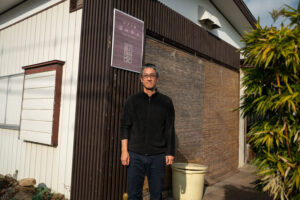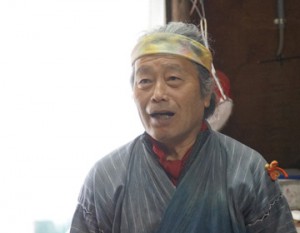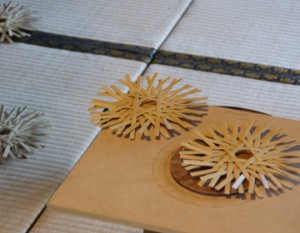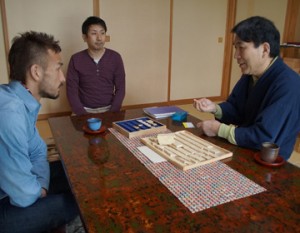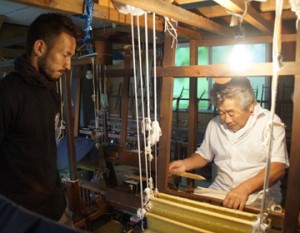Yonezawa Ori, the tradition of Yamagata
Yonezawa was already flourishing with ramie and safflower cultivation by the Edo period, but the textile industry became a full fledged industry thanks to Kanetsugu Naoe, a high-ranking Samurai serving Kenshin Uesugi. He bought out the products from farmers and sold them to various regions known for textile production, and built a financial foundation for his feudal domain.
Later in history, in the late 1700’s, Yozan Uesugi became the lord of the Yonezawa area, and he promoted the fiber and textile industries as a part of his plan to revitalize Yonezawa. He invited instructors from the present-day Niigata prefecture, directed farmers to raise silkworms, and built a foundation for “Yonezawa Ori” textiles. Since then, “Yonezawa Ori” has become a 200-year-old tradition.
The Characteristic of Yonezawa Ori
The feature of “Yonezawa Ori” is the colors that come from natural dyes. In recent years, research has advanced, and in addition to the natural dyes from plants, other colors have been added. In some products, chemical fibers have been woven in and many attempts to advance the tradition further have been taken.
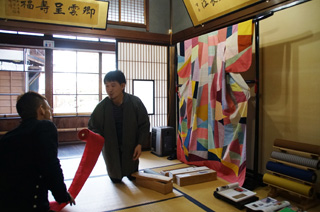
Good things have “power”
We interviewed Gentaro Nitta, the Representative Director and President of Nitta Textile Arts Inc., a 130-year-old textile company founded in 1884. Nitta was born in 1980. He learned the basics working at an old kimono sash maker in Kyoto, and has been active in Yonezawa since 2005. He won the Japan Kōgei Association Freshman Award at the Japan Traditional Art Crafts Exhibition in 2011.
The award-winning item was a “hakama” skirt. Its innovative design with gold threads received high praise. ”There are certain rules you have to follow in the patterns for “hakama”, but I wanted to start a new design. I wanted to be particular about design for people who are actually particular about the “hakama” they wear.“ Nitta told us.
“A good item has something like power in it. It’s hard to explain but, it’s like a feeling that anyone can pick up. I call it softness or even “sweetness”, but it’s a feeling you can feel when you take it in your hands, when you wear it, and when you see yourself in it. It’s something you feel.“
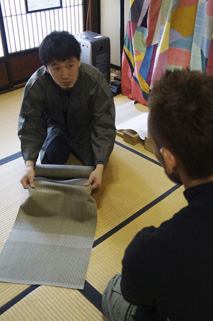
Dyed with many colors
Many “Yonezawa Ori” workshops specialize in weaving and don’t have a dyeing workshop. But at Nitta’s workshop it’s not just about weaving. They start with dyeing, and go through the entire process of Kimono making. That’s why they are able to bring the final product closer to their ideals, as they can experiment and control the threads and the weaving process.
“This one was presented by my grandparents” Nitta explained as he showed us a safflower dyed textile. “You can even still smell the dye. It’s entirely dyed using safflower. I am confident that there is no other product like this in the world. When you hold it up against the light in the dark, you can see the red color.“
Presently, a variety of workshops operate in Yamagata, from those specializing in thread spinning, to those specializing in weaving or sewing. It is very unusual for all the workshops to be concentrated in one region. Kyoto is one of the few. This means that Yonezawa is a comprehensive textile production region within Japan. Each workshop comes up with new ideas and skills every day. Products made in Yonezawa will surely be worth following.
